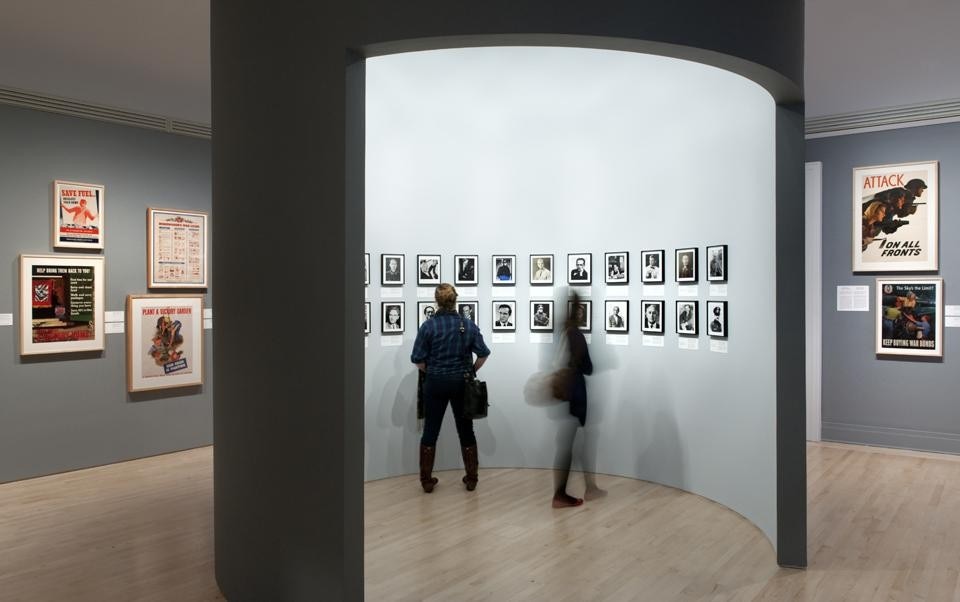Jean-Louis Cohen: It is difficult to answer to such a question without evoking the context. In contrast to what almost all the existing history handbooks tell us, there was plenty of architecture built in most countries during that time. Some of this legacy is very difficult to reach (the Soviet), some are still totally impossible (Japan). The part that coincided with the narratives about the development of the Modern movement — the reconstruction — is the only one that has been discussed. So why this absence of the Second World War? It differs according to the countries. The exhibition World War II and the American Dream curated by Donald Albrecht more than ten years ago at the National Building Museum in Washington DC remains the most interesting one. In England, there has been much work on wartime in relation to everyday culture. French scholars have also worked on the history of reconstruction, but not so deeply on the Vichy regime and its policies. In Italy the situation in several cities has been documented through exhibitions, but altogether an understanding of the system through which the practice of architecture was reshaped after the end of the Mussolini's regime is still enigmatic. Probably the only country where things have been discussed in a rather ample manner is Germany. Two generations of scholars have had to deal with the legacy of Nazism, the Holocaust and the German occupation in Poland. Also, the work done by Hans Robert van Pelt on Auschwitz is of great interest. What was missing was an attempt at connecting these monographic, or even micrographic histories, with history at large. This is my attempt, on the base of original research in many cases, but also reading the research done by dozens of people.
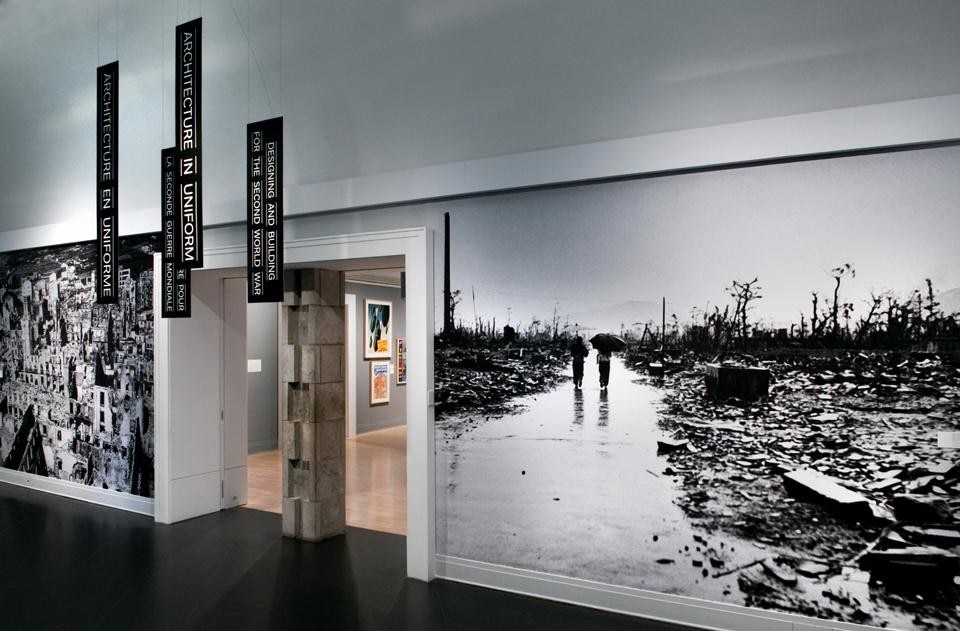
The difference between an exhibition and a book is extreme. In a book you can almost say whatever you want and making your point is easy. In an exhibition you can only make a point documented by objects. Hence it was difficult to find what I would call the specific language of this exhibition, without indulging in a sort of tragic narrative. This was certainly not the point, as there are places for that, such as in history museums. I didn't want to indulge either in what I would call military kitsch, like showing pieces of airplanes or pieces of military hardware. Yet, at some point, I found that probably having a jeep, or part of a jeep, would have been meaningful as it represents the emergence of a new sensibility in which technical objects wandering around the world were taken seriously as they seemed to announce a new design and a new aesthetic. In the end, we kept a significant nucleus of works on the walls, and this prevented us from doing other things.
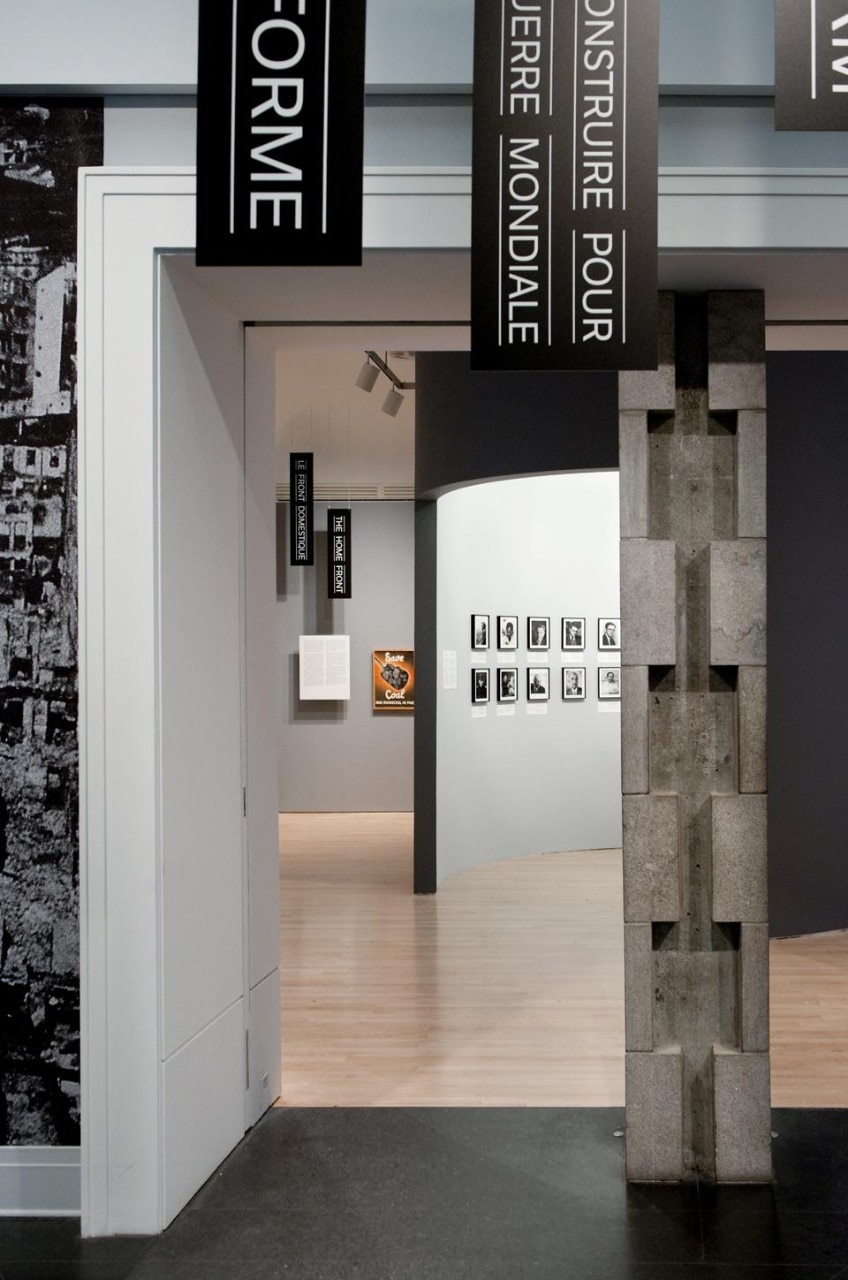
This war reshaped the entire territory of several nations, so I could have told the story of the reconstruction with hundreds of beautiful drawings and interesting, conflicting stories. I could have focused solidly on military architecture, beginning with the Maginot line, which remains an amazing and vast place, an underground linear city stretching for 400 kilometres. Then you have the Atlantic wall of the Nazis, which still stands and in places is still impressive, and scores of other structures, such as the bases built by the Nazis for the rocket offensive against Britain. There are incredible buildings in North-western France, for instance the largest dome built during the war in Eperlecques. There are even some bunkers remaining on the Canadian coasts, built when Canada and the US were still afraid of German and Japanese raids. The world is full of these systems, but documenting them all would be excessive. There are several artists and historians who have done more, but in a way, we decided to be more specific. Also the quality of certain works is amazing. I am thinking of the photographs of Guido Guidi, and of the old ones shot by Paul Virilio. I am also thinking of the work of the French photographer Anne Garde. But this again would have been probably a very different story. And one in which architects were only minimally involved. They were involved in the building of the Atlantic Wall in France, as supervisors or coordinators. They were present in understanding the murderous ideas of the Nazis into built forms. Some of them were even punished after the war. But this remains an exception.
What does it mean when architects are taking part to operations of systematic destruction such as the English or American bombings of Germany, or when architects participate in criminal colonization, like what the Nazis did in Poland? What does it tell us about the engagement, the ethical responsibility, of the architects?
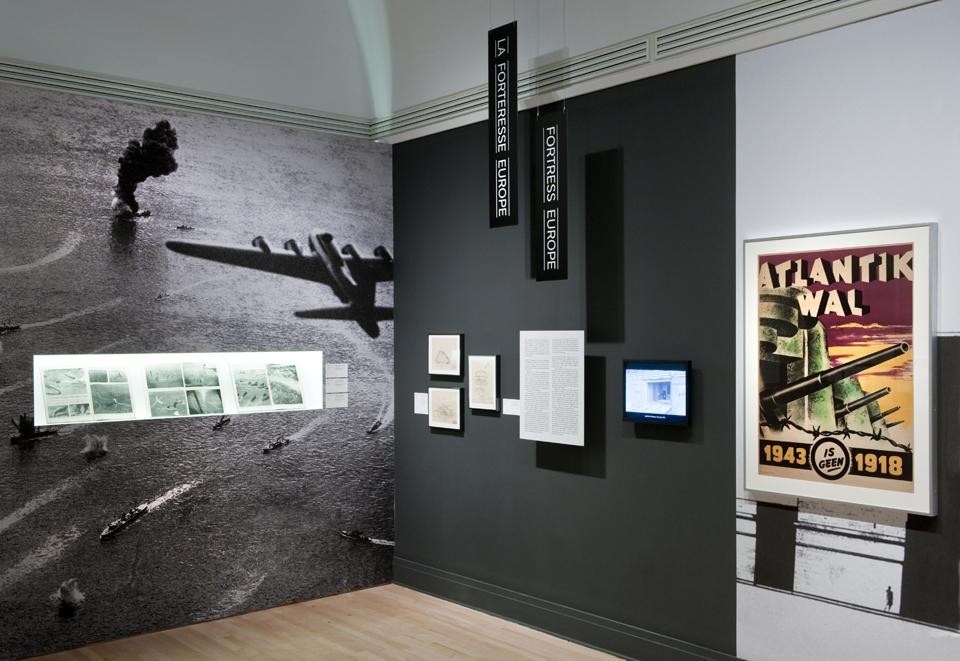
Again don't forget that this is an exhibition and a book about architecture and not about everything that was produced for the war. Otherwise, I could have worked on the most minimal shack, or on the smallest rabbit-hole dug for guards at the entry of the airbases. To paraphrase Nikolaus Pevsner, who said that architecture could stretch from the bicycle shack to the cathedral of Lincoln; the cathedral would probably be the Pentagon, and the bicycle shack the individual shelter. I was interested on a certain level in the complexity of mega-projects: the Pentagon, Auschwitz and the Peenemünde rocket production and testing facilities. But I was also interested in the work done, in particular on the Nazi side, in order to equalize the entire spectrum of architectural production. The work of Ernst Neufert for instance, is relatively little known outside of Germany, yet he tried to unify the entire built production of Nazi Germany with one single modular system. At the same time, we document the research on minimal spaces, on the minimal occupancy of space by human bodies is of course the other side of the same coin and it is probably more important for what followed after 1945 for the massive production of housing, offices and normalised and controlled spaces, than the major process that had an impact on the organization of big offices in the profession.
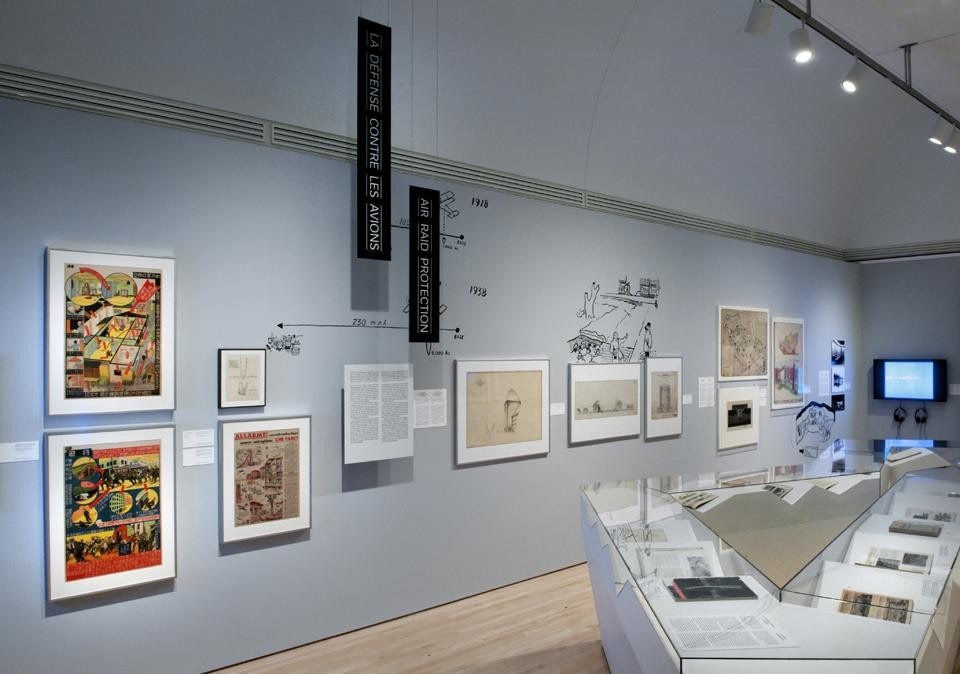
In every type of research there is an important role played by what could be called psychoanalytical transfer, or the relationship the scholar has with his or her topic of research. You don't spend 25 years of your life—as I started the research on occupation architecture in 1986—by coincidence. There is a deep motivation to do that. And, in my case, it goes back to the experience of my generation, of children raised after the war in a country like France or Italy or England, where the memory of the war was still felt in the cities and in the literature that we used to read. So, having become an architect and an historian, I have been able to look back at this episode with new tools—not the tools of nostalgia but the tools of knowledge—and try also to understand these developments that had not been mentioned at all before. So both the exhibition and the book published in parallel are an expression of my personal impulse to see what seemed to be forbidden or at least was not visible at the time. At the same time, I've looked back at episodes I was interested in.
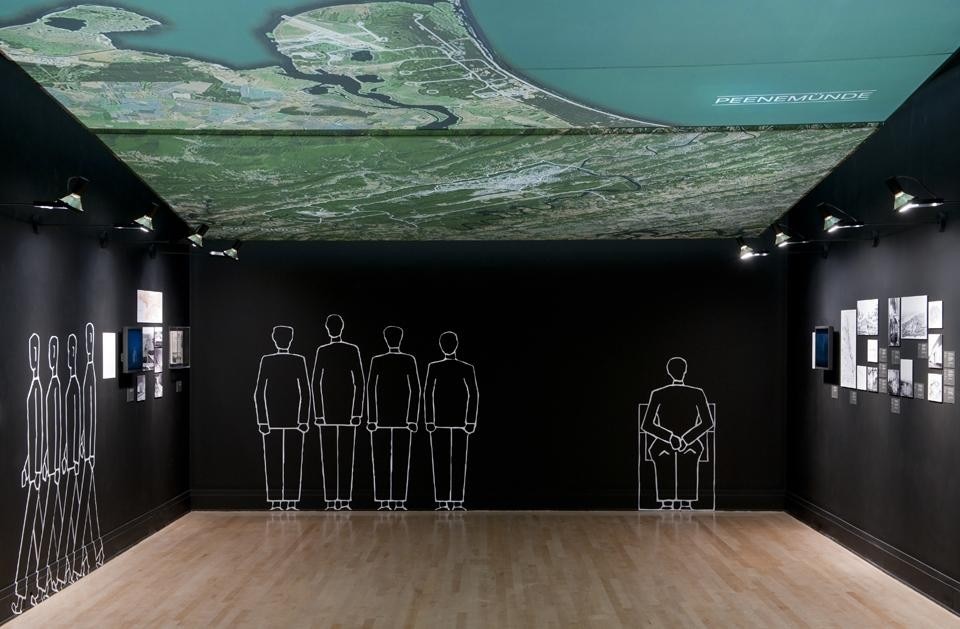
This war was a just war, one that had to be won by the forces of democracy against Nazism and Fascism, even if their forces were allied with Stalin who was not particularly a democrat. Anyway, the Russian contribution to the war has been enormous and this by the way was of great importance for me to include in the exhibition. It is important to mention that there is also a major difference between World War II and all the wars that have happened since. This remains the last war in which entire nations were mobilised—as well as entire professions. The Korean war, the French colonial wars, the Vietnam war and all the recent wars in many parts of the world, in the former Yugoslavia, between Iran and Iraq, etc. have been fought by professionals or at least by drafted military, with career military experts. Never have the professions been engaged in combined intense force actions as during those years from 1936, when it started in Spain, to 1945.
And the question of course is in what way the war raises issues for professions like architecture, the culture of which has humanistic goals, that is, at the most basic level, providing shelter. What does it mean when architects are taking part to operations of systematic destruction such as the English or American bombings of Germany for instance, or when architects participate in criminal colonization, like what the Nazis did in Poland? What does it tell us about the engagement, the ethical responsibility, of the architects? It is probably a fact that this profession has a sort of moral and ethical horizon that is no better than the others. There were also medical doctors in hospitals during or in Japan doing abominable experiments with the prisoners.
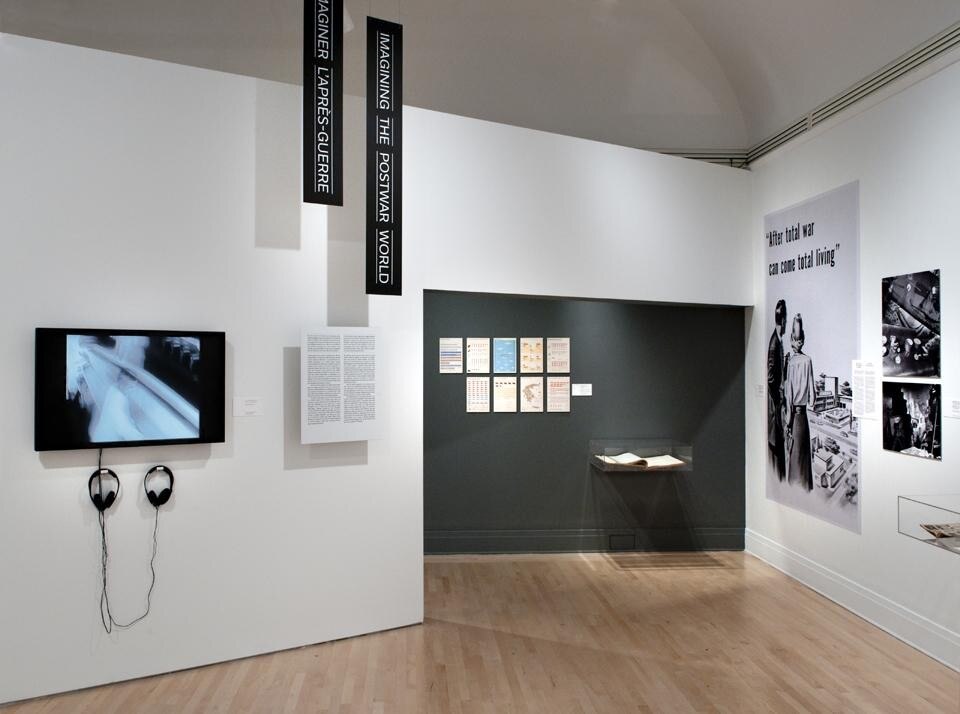
The exhibition Architecture in Uniform, curated by Jean-Louis Cohen at the CCA in Montreal, runs through September 18, 2011.

